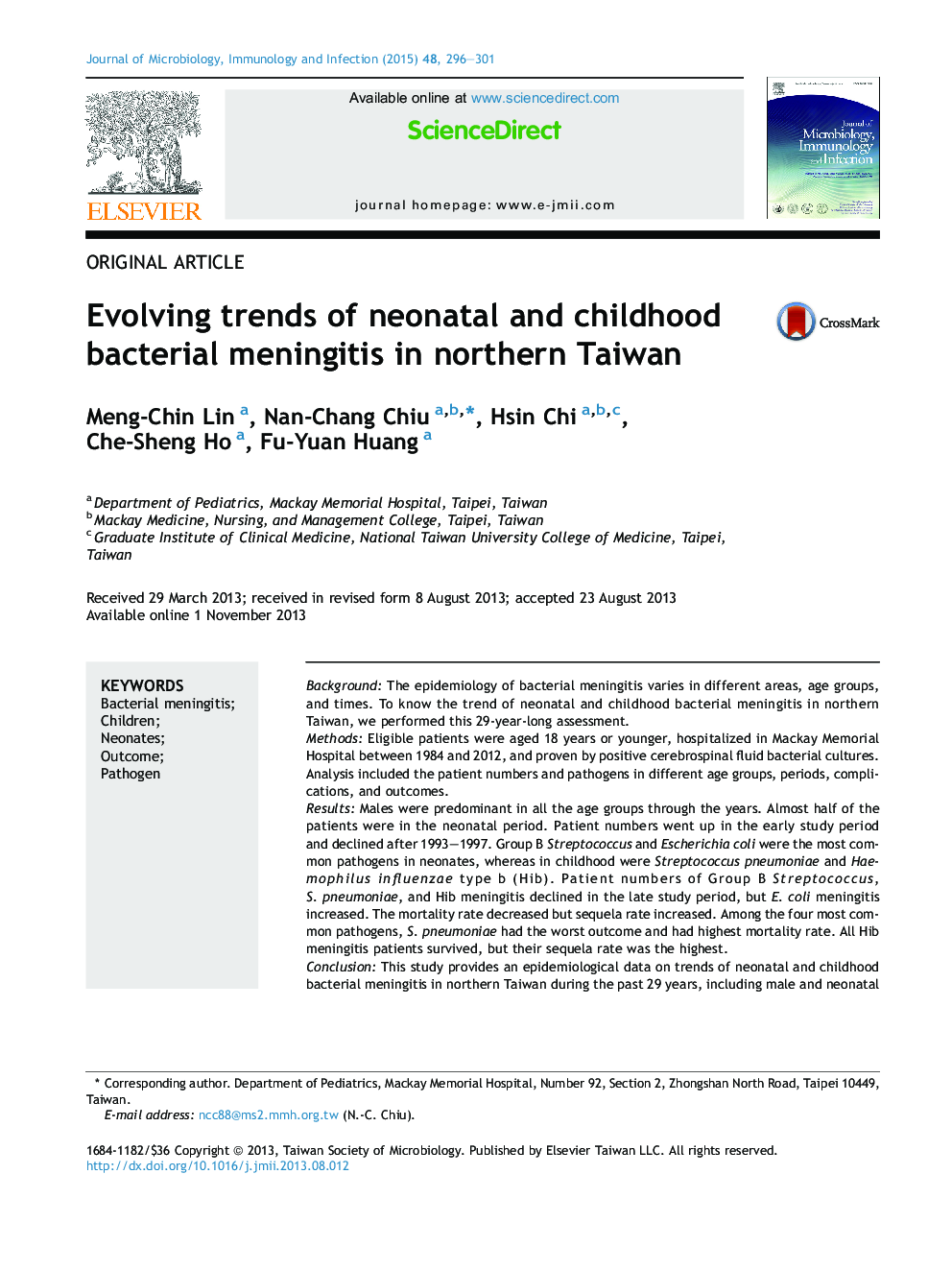| Article ID | Journal | Published Year | Pages | File Type |
|---|---|---|---|---|
| 3377755 | Journal of Microbiology, Immunology and Infection | 2015 | 6 Pages |
BackgroundThe epidemiology of bacterial meningitis varies in different areas, age groups, and times. To know the trend of neonatal and childhood bacterial meningitis in northern Taiwan, we performed this 29-year-long assessment.MethodsEligible patients were aged 18 years or younger, hospitalized in Mackay Memorial Hospital between 1984 and 2012, and proven by positive cerebrospinal fluid bacterial cultures. Analysis included the patient numbers and pathogens in different age groups, periods, complications, and outcomes.ResultsMales were predominant in all the age groups through the years. Almost half of the patients were in the neonatal period. Patient numbers went up in the early study period and declined after 1993–1997. Group B Streptococcus and Escherichia coli were the most common pathogens in neonates, whereas in childhood were Streptococcus pneumoniae and Haemophilus influenzae type b (Hib). Patient numbers of Group B Streptococcus, S. pneumoniae, and Hib meningitis declined in the late study period, but E. coli meningitis increased. The mortality rate decreased but sequela rate increased. Among the four most common pathogens, S. pneumoniae had the worst outcome and had highest mortality rate. All Hib meningitis patients survived, but their sequela rate was the highest.ConclusionThis study provides an epidemiological data on trends of neonatal and childhood bacterial meningitis in northern Taiwan during the past 29 years, including male and neonatal predominance, decrease of total patient number in recent years, change of major pathogens, and declined mortality but raised morbidity.
